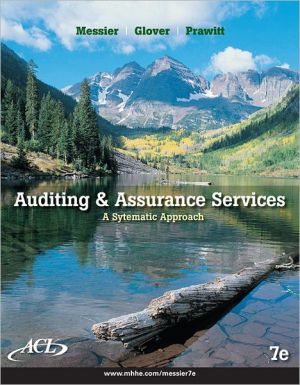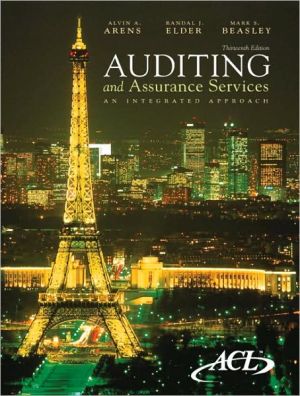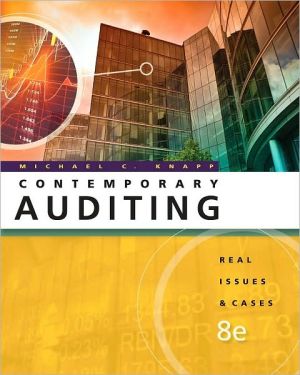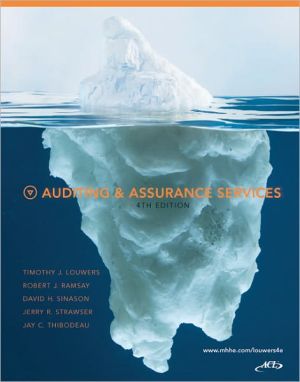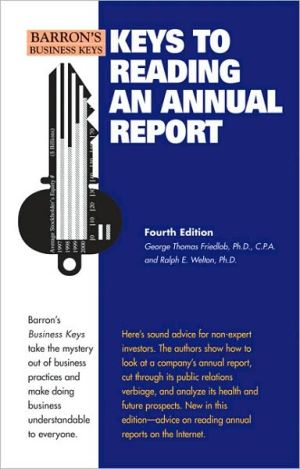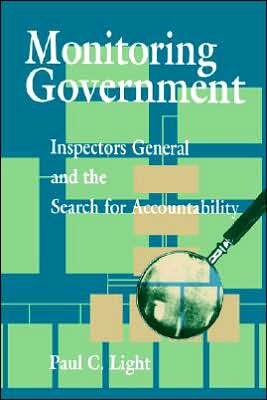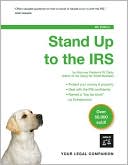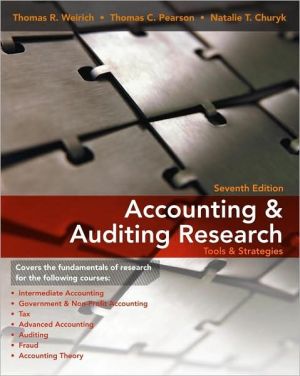Auditing and Assurance Services with ACL Software CD
Messier employs the audit approach currently being used by auditing professionals. This approach is a direct result of the demands of Sarbanes-Oxley, which has changed the way auditors do their jobs. The approach emphasizes understanding the entity (i.e., the organization or business being audited) and its environment (i.e. industry), and then assessing the business risks faced by the entity and how management controls those risks. This audit process focuses on business processes instead of...
Search in google:
Messier employs the audit approach currently being used by auditing professionals. This approach is a direct result of the demands of Sarbanes-Oxley, which has changed the way auditors do their jobs. The approach emphasizes understanding the entity (i.e., the organization or business being audited) and its environment (i.e. industry), and then assessing the business risks faced by the entity and how management controls those risks. This audit process focuses on business processes instead of accounting cycles. This unique and innovative approach has been developed in response to changing market dynamics. The systematic approach, referred to in the subtitle of the text, reflects the early introduction of three basic concepts that underlie the audit process: materiality, audit risk, and evidence; this allows Messier to build upon this model in subsequent chapters. These are central to everything an auditor does and a unique feature of Messier. As such, this approach helps students develop auditor judgment, a vital skill in today’s auditing environment.
Auditing and Assurance Services: A Systematic Approach, Seventh Edition Part I Introduction to Assurance and Financial Statement AuditingChapter 1 An Introduction to Assurance and Financial Statement AuditingChapter 2 The Financial Statement Auditing EnvironmentPart II Basic Auditing Concepts: Risk Assessment, Materiality and EvidenceChapter 3 Risk Assessment and MaterialityChapter 4 Audit Evidence and Audit DocumentationPart III Planning the Audit, and Understanding the Auditing Internal ControlChapter 5 Audit Planning and Types of Audit TestsChapter 6 Internal Control in a Financial Statement AuditChapter 7 Auditing Internal Control over Financial ReportingPart IV Statistical and Nonstatistical Sampling Tools for AuditingChapter 8 Audit Sampling: An Overview and Application to Tests of ControlsChapter 9 Audit Sampling: An Application to Substantive Tests of Account BalancesPart V Auditing Business ProcessesChapter 10 Auditing the Revenue ProcessChapter 11 Auditing the Purchasing ProcessChapter 12 Auditing the Human Resource Management ProcessChapter 13 Auditing the Inventory Management ProcessChapter 14 Auditing the Financing/Investing Process: Prepaid Expenses, Intangible Assets, and Property, Plant and EquipmentChapter 15 Auditing the Financing/Investing Process: Long-Term Liabilities, Stockholders’ Equity, and Income Statement AccountsChapter 16 Auditing the Financing/Investing Process: Cash and InvestmentsPart VI Completing the Audit and Reporting ResponsibilitiesChapter 17 Completing the Audit EngagementChapter 18 Reports on Audited Financial StatementsPart VII Professional ResponsibilitiesChapter 19 Professional Conduct, Independence, and Quality ControlChapter 20 Legal LiabilityPart VIII Assurance, Attestation, and Internal Auditing ServicesChapter 21 Assurance, Attestation, and Internal Auditing Services
